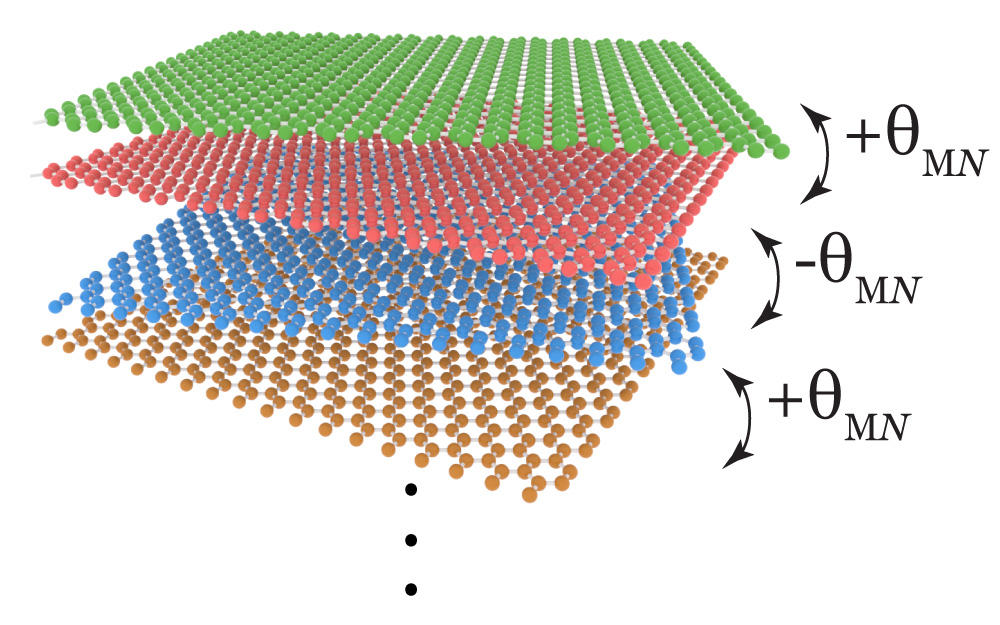Superconducting Graphene: Unlocking New Technologies

Superconducting graphene is at the forefront of cutting-edge research, showcasing the incredible potential of twisted graphene structures. These unique carbon configurations not only exhibit unique superconducting properties but also promise substantial advancements in energy-efficient technologies. Researchers are exploring how superconductors, particularly those derived from graphene, could revolutionize lossless power transmission, enhance quantum computing capabilities, and enable the development of sensitive detectors for various applications, including space exploration. The discovery of superconducting behavior in layered twisted graphene opens new avenues for scientific inquiry and innovation, potentially transforming our understanding of electrical conduction. As the field evolves, the implications of these breakthroughs could pave the way for the next generation of technological advancements.
Graphene-based superconductors represent a significant leap in materials science, particularly in the realm of quantum technologies. These innovative structures, characterized by their unique layered and twisted formations, unlock new superconducting behaviors that conventional materials cannot replicate. With their ability to facilitate lossless electrical transmission and contribute to the development of advanced quantum computing systems, superconducting graphene may redefine the landscape of energy-efficient electronics. As scientists delve deeper into this realm, the applications for these superconducting materials—ranging from innovative power solutions to highly sensitive detectors—remain vast. The ongoing research underscores the importance of these advanced materials in pushing the boundaries of what is possible in the realms of science and technology.
Understanding Superconducting Graphene
Superconducting graphene has emerged as a groundbreaking material in the field of condensed matter physics and nanotechnology. At its core, this fascinating phenomenon arises from the unique properties of graphene, particularly when twisted in bilayers or multilayers. The intricate interplay of quantum mechanics with the characteristics of two-dimensional materials adds a rich layer of complexity, allowing researchers to explore new avenues of superconductivity. By manipulating the orientation of graphene layers, scientists can unlock different superconducting behaviors, enhancing our understanding of electron pairing and conductivity.
The revelation of superconductivity in twisted graphene layers opens the door to numerous applications, promising significant advancements in various industries. For instance, this novel form of superconductivity holds the potential to revolutionize lossless power transmission, enabling more efficient energy transfer systems. Furthermore, the unique properties of superconducting graphene could lead to the development of powerful quantum computing systems that leverage the speed and efficiency of superconducting qubits, driving the next generation of technology.
Frequently Asked Questions
What are the applications of superconducting graphene in quantum computing?
Superconducting graphene has the potential to revolutionize quantum computing by enabling lossless power transmission and improved qubit performance. The unique properties of twisted graphene allow for efficient electron pairing, which is crucial in developing stable and scalable quantum circuits.
How does twisted graphene enhance energy-efficient detectors for space exploration?
Twisted graphene can create ultrasensitive detectors that operate with minimal power, making them ideal for space exploration. These energy-efficient detectors can function effectively in the near vacuum of space, where they require high resolution while consuming less energy.
What makes superconducting graphene different from conventional superconductors?
Superconducting graphene exhibits unique behavior due to the interactions between electrons in twisted layers, leading to a ‘quantum dance’ that differs from conventional superconductors like aluminum. This behavior results from the pairing mechanism in twisted graphene, which produces a strong enough condensation to achieve a superfluid state without energy loss.
Can superconducting graphene improve lossless power transmission?
Yes, superconducting graphene shows promise for enhancing lossless power transmission. This material can conduct electricity with zero resistance at low temperatures, making it an attractive candidate for efficient energy systems, paving the way for advancements in electric grids and transportation.
What is the significance of the ‘quantum dance’ observed in superconducting graphene?
The ‘quantum dance’ refers to the synchronized movement of paired electrons in superconducting graphene, which defies conventional repulsion due to their negative charge. Understanding this quantum behavior is essential for unlocking the mechanisms behind superconductivity and developing new superconducting materials.
What advancements have researchers made in studying superconducting graphene?
Researchers have discovered unusual superconducting behaviors in twisted graphene using microwave technology that allows them to probe the resonant vibrations of paired electrons. This innovative approach helps unlock clues about electron pairing dynamics, which may lead to broader applications in quantum computing and materials science.
Why is the discovery of superconductivity in twisted graphene important?
The discovery of superconductivity in twisted graphene represents a significant advancement in materials science, as it opens new avenues for research into superconductors. It provides insights into electron interactions in two-dimensional materials, potentially leading to the development of next-generation technologies in energy and computing.
| Key Point | Details |
|---|---|
| Superconductivity | Superconductors can transmit electricity without resistance, with applications in power transmission, levitating trains, and quantum computing. |
| Twisted Graphene | Researchers discovered unusual superconducting behavior in twisted stacks of graphene, a single atomic layer of carbon, with significant implications. |
| Research Team | The study involved researchers from Harvard, MIT, and Raytheon-BBN Technologies, published in *Nature*. |
| Electrons’ Behavior | In twisted graphene, the superconducting behavior differs from conventional superconductors, indicating a complex interaction of electrons. |
| Quantum Dance | Understanding how electrons pair and move at low temperatures is crucial to addressing superconductivity in twisted graphene. |
| Potential Applications | Twisted graphene may lead to ultra-sensitive, energy-efficient detectors for space exploration. |
Summary
Superconducting Graphene presents a groundbreaking frontier in modern physics by revealing how twisted configurations of graphene can lead to unique superconducting properties. This material holds the potential to lead advancements in lossless power transmission, enhance quantum computing efficiencies, and create new technologies for space exploration. The ongoing research illustrates the complex interactions between electrons in this innovative material, offering insights that could revolutionize our understanding and application of superconductors.


